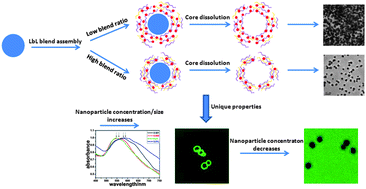Controllably layer-by-layer self-assembled polyelectrolytes/nanoparticle blend hollow capsules and their unique properties†
Abstract
Fabrication of a

* Corresponding authors
a
School of Chemical and Biomedical Engineering, Nanyang Technological University, 70 Nanyang Drive, Singapore, Singapore
E-mail:
ECMLi@ntu.edu.sg
Fax: +65 6791 1761
Tel: +65 6790 4485
b Centre for Advanced Bionanosystems, Nanyang Technological University, 70 Nanyang Drive, Singapore, Singapore
Fabrication of a

 Please wait while we load your content...
Something went wrong. Try again?
Please wait while we load your content...
Something went wrong. Try again?
W. Yuan, Z. Lu and C. M. Li, J. Mater. Chem., 2011, 21, 5148 DOI: 10.1039/C0JM03925J
To request permission to reproduce material from this article, please go to the Copyright Clearance Center request page.
If you are an author contributing to an RSC publication, you do not need to request permission provided correct acknowledgement is given.
If you are the author of this article, you do not need to request permission to reproduce figures and diagrams provided correct acknowledgement is given. If you want to reproduce the whole article in a third-party publication (excluding your thesis/dissertation for which permission is not required) please go to the Copyright Clearance Center request page.
Read more about how to correctly acknowledge RSC content.
 Fetching data from CrossRef.
Fetching data from CrossRef.
This may take some time to load.
Loading related content
